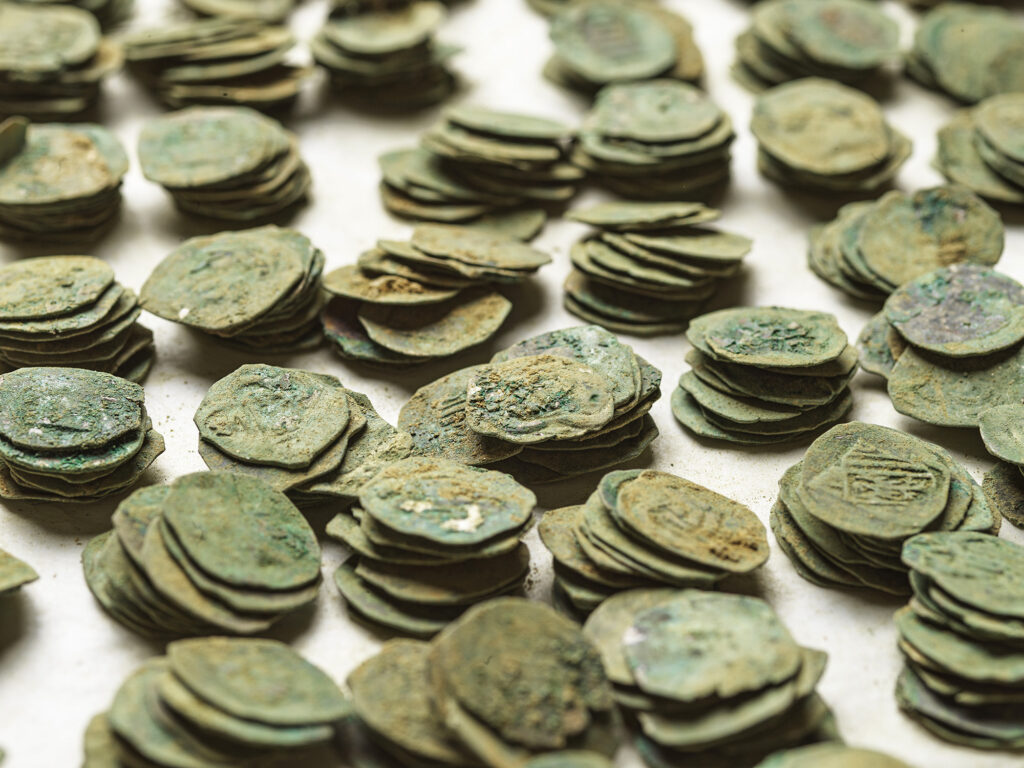Over 6,000 Silver Coins From The Middle Ages Found During Farm Renovation
Over 6,000 silver coins from the late Middle Ages have been discovered during a renovation project on a farm in Austria.
The discovery took place in the village of Rainbach im Muehlkreis, which is located in the northern Austrian state of Upper Austria.
The silver coins have been handed over to the OOe Landes-Kultur GmbH, which is a museum in Upper Austria. The museum released a statement saying: “These are around 6,000 silver coins that were wrapped in fabric and kept in a clay lidded pot.

“As a hiding place, the owner chose a spot in the foundation of a farmhouse, which he chose so skilfully that the coins remained undiscovered for more than five centuries.”
The museum also said that it was currently unclear how the coins had got there and who they belonged to. The statement said: “We can only make assumptions about the question of who the former owner was, most likely it was the former owner of the farm or one of his family members, servants as owners can in any case be excluded in view of the size.”
The statement also said that “the exact time of the concealment is not yet known. What is certain, however, is that it is from the second half of the 15th century and consists of different types of coins that were then in circulation in the country as a means of payment.”

The museum gave details about the different coins they found, saying: “On the one hand, these were pfennigs and their half-pieces, called ‘halves’, on the other hand, larger coins worth several pfennigs, mainly ‘Prague groschen’ imported from Bohemia and some Milanese pegioni, popularly called ‘snake groschen’ after the coat of arms, and Tiroler Kreuzer, a type of coin of particularly high quality.”
The museum also said that it could not put a value on the coins, stating that they would be the subject of scientific study.
It said that the find represented “one of the most extensive, late medieval complexes from a rural milieu in our state and beyond.”

The OOe museum in Upper Austria boasts a huge facility that includes over 10,000 square metres of exhibition space that focuses on natural, cultural and art history. They say on their website: “There is a wide spectrum of permanent exhibitions in the historic castle and in the new southern wing.
“They range from geological to contemporary history and bear witness to diverse and extensive special areas.
“The permanent exhibitions are flanked by diverse special exhibitions on current international and regional, as well as cultural, natural and contemporary history topics.”

It is currently unclear if and when the coins will go on display at the museum.



